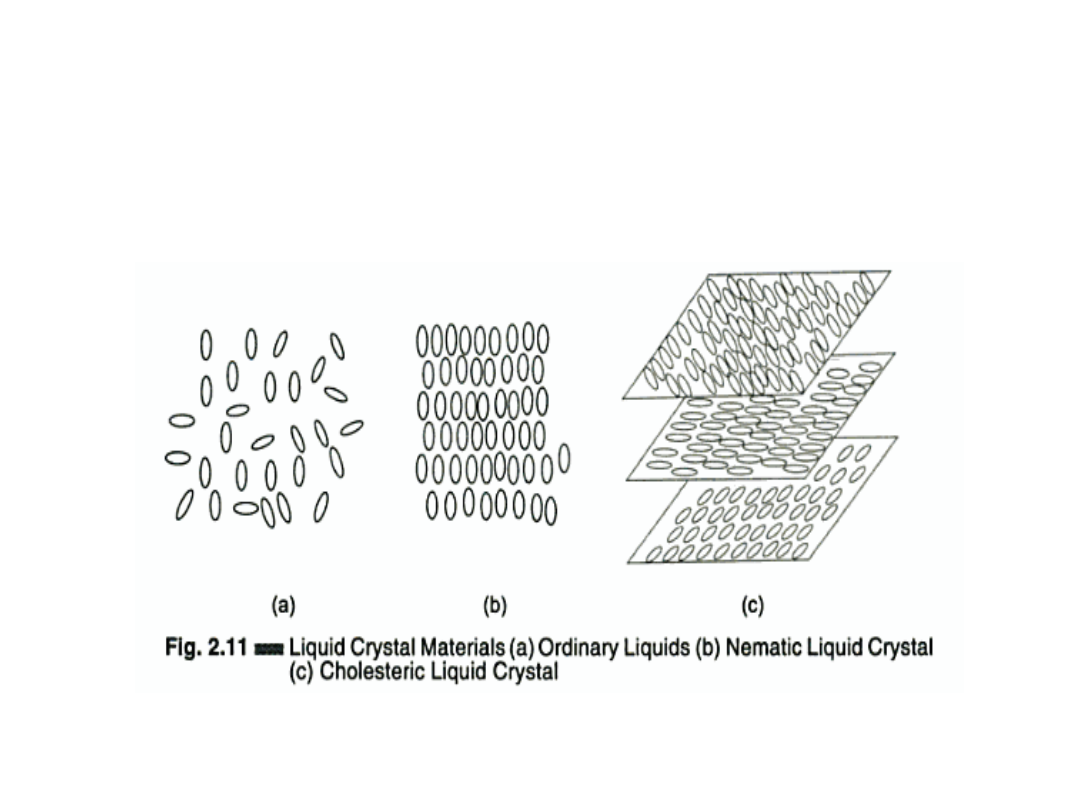
CRT TECHNOLOGY

CRT : DEFINITION
• A CRT is a glass tube that is narrow
at one end and opens to a flat screen
at the other end.

CRT : STRUCTURE
• Narrow end of CRT contains
– a single electron gun for single-color
monitor
– Three electron guns for a color monitor
—one each for three primary colors: red,
green, and yellow.
• The display screen is covered with
tiny phosphor dots.

CRT : PRINCIPLE
• CRT display works on :
Electron emission
Electrons are emitted from the Cathode
tube.
Phosphorescence
It is the emission of visible light, when
electron beam strikes Phosphor
material.

CRT : WORKING
• Cathode
• Grid
• Focusing anode
• Accelerating anode
• Aquadag coating

CRT DISPLAY:ADVANTAGES
• Offers greater resolution .
• Widest viewing angle when
compared to any other technology.
• It is cheap as compared to
LCD,PLASMA displays.

CRT DISPLAY:DISADVANTAGES
• Thickness is much larger as compared to
LCD, PLASMA display.
• Cannot be used for smaller displays
like watches.
• View area is less than the offered monitor
size.
• It is more heavier.

LED TECHNOLOGY

Working of LED
• A light emitting diode is composed of a
semiconductor diode. A semiconductor is a
material that can conduct electricity. A
semiconductor diode is composed of a
semiconductive crystal that has added
impurities in order to create a positive and
negative side; since current flows in one
direction through the diode. A region is
then created in between the positive and
negative zones, called a PN junction, which
is where the action takes place within the
diode; in our case it emits light.

Structure and symbol of LED

LED packages for single element
LEDs
Metal can to-5
type
Epoxy
type

Advantages of LEDs
• Efficiency: An incandescent light requires much
more energy to properly heat the filament in order
to generate light. The light produced by an LED is a
cool light. More light is produced per watt in an LED
than an incandescent.
• Color: LEDs do not require filters, like colored bulbs,
in order to create a specific colored light. Color is
produced based on the material of the
semiconductor.
• Size: LEDs come in many different sizes since they
are not constrained to creating a vacuum in which
to house the filament. LEDs can be smaller than 2
mm.
• On/Off Time: LEDs are very fast devices, having
turn ON/OFF time of less than 1ns.
• Cycling: In applications that are cycled between on
and off frequently, like an outdoor solar light, LEDs
are ideal since they won't burn out quickly.

Cont’d
• Lifetime: The lifetime of the LED greatly exceeds
its incandescent, and even its fluorescent
counterparts. An average lifetime of an
incandescent light is 1,000-2,000 hrs. The LED,
on the other hand, has a typical lifetime of
35,000-50,000 hrs.
• Light Dispersement: An LED is designed to focus
its light, so where an incandescent or fluorescent
may seem brighter since the light radiates in all
directions, the LED light can be directed to a
specific location without the use of an external
reflector.
• Ecologically Friendly: LEDs are more efficient than
others, as stated above; so they conserve
electricity, especially if they are solar powered.

Different material used for
doping
• Ga As --- red
• Ga As P -- red or yellow
• Ga P – red or green

LCD TECHNOLOGY

LCD : DEFINITION
A liquid crystal display is a thin,
flat display device made up of any
number of pixels arrayed in front of a
light source or reflector. It uses very
small amounts of electric power, and
is suitable for use in battery-powered
electronic devices

LCD : PRINCIPLE
• Liquid crystals are organic compounds,
whose macroscopic behavior resemble
that of liquid but shows physical
properties of crystals
• They have characteristics like: rod-like
molecular structure, rigidness of the long
axis, and strong dipoles and/or easily
polarizable constituents.

CHARACTERISTICS :

LCD : CONSTRUCTION
• Each pixel of an LCD consists of a
layer of molecules aligned between
two transparent electrodes.
• Orientation of the liquid crystal
molecules is determined by the
alignment at the surfaces.

LCD : CONSTRUCTION

A subpixel of a color LCD

LCD : WORKING
• Before applying Electric field, the
molecules arrange themselves in a
helical structure, or twist.
• When a voltage is applied across the
electrodes, a torque acts to align the
liquid crystal molecules parallel to
the electric field , distorting the
helical structure .
• This reduces the rotation of the
polarization of the incident light.

LCD : CLASSIFICATION
• Transmissive displays:
It is illuminated from the back by a
backlight and viewed from the
opposite side (front).Ex :Computer
display.
• Reflective displays:
It is illuminated by external light
reflected by a diffusing reflector
behind the display. Ex: Calculator.

LCD : USES
• LCDs with a small number of
segments, are used in digital
watches and pocket calculators
• Small monochrome displays in
personal organizers, or older laptop
screens
• High-resolution color displays such as
modern LCD computer monitors and
televisions

Features
• Electric field reqd to activate LCD is
of the order of 10
4
V/cm. (=10V when
NLC is 10u thick)
• NLC material possess high resistivity
10
10
ohm. So the current reqd for
scattering light in NLC material is
very marginal.
• Power requirement is 10uW/cm
• Slow device (on/off time upto few
ms)


Printers and plotters
• Printer - A device that prints text or
illustrations on paper.
• Plotters - These printers use a pen
to draw the image on the paper.

Classification
• Impact and non impact
• Fully formed character and dot
matrix printer
• Character at a time and line at a time
printer

Types
• DOT Matrix Printer - Type of printer that employs
movable print heads with pins or wires that shoot and
strike the ribbon placing a dot on the paper with
hundreds of dots forming images or text.
• Inkjet Printer - Printer developed by Canon which
forms letters and images on the paper by spraying
small streams of quick-drying ink. The ink is stored in
a disposable ink cartridge.
• Laser Printer - Laser printers are Printer that uses
laser technology to print images on the paper. The
laser recreates the image on a negatively charged
drum which will then collect ink that is positively
charged to attract to the areas of the image. The
Paper is then negatively charged therefore the
positively charged ink is attracted to the paper and
then is fused onto the paper.

Cont’d
• Thermal printer - A printer that uses heated
pins to "burn" images onto heat-sensitive paper.
The pins are electrically heated and brought into
contact with the specially treated paper easily,
instead of with great impact. The coating on the
paper discolors when heated in this way. These
printers, used in calculators and many fax
machines, are inexpensive, but produce low-
quality, low resolution print. They are however,
quiet and fast as they print.
Document Outline
- CRT TECHNOLOGY
- CRT : DEFINITION
- CRT : STRUCTURE
- CRT : PRINCIPLE
- CRT : WORKING
- CRT DISPLAY:ADVANTAGES
- CRT DISPLAY:DISADVANTAGES
- LED TECHNOLOGY
- Working of LED
- Structure and symbol of LED
- LED packages for single element LEDs
- Advantages of LEDs
- Cont’d
- Different material used for doping
- LCD TECHNOLOGY
- LCD : DEFINITION
- LCD : PRINCIPLE
- CHARACTERISTICS :
- LCD : CONSTRUCTION
- LCD : CONSTRUCTION
- Slide 21
- LCD : WORKING
- LCD : CLASSIFICATION
- LCD : USES
- Features
- Slide 26
- Printers and plotters
- Classification
- Types
- Cont’d
Wyszukiwarka
Podobne podstrony:
15427 indicators and display devicesid 16461 pptx
Digital control methods of LED and LED lamps
Whats the Difference Between LCD, LED, and Plasma
The American Civil War and the Events that led to its End
Led Zepplin Rock and Roll Gods
led zeppelin various (bass tab and score) kensey
Led Zeppelin Rock And Roll
15427 display devicesid 16459 pptx
Led s spectral power distribution under different condition of operating temperature and driving cur
Postmodernity and Postmodernism ppt May 2014(3)
Scoliosis and Kyphosis
L 3 Complex functions and Polynomials
4 Plant Structure, Growth and Development, before ppt
Osteoporosis ľ diagnosis and treatment
05 DFC 4 1 Sequence and Interation of Key QMS Processes Rev 3 1 03
Literature and Religion
lec6a Geometric and Brightness Image Interpolation 17
Historia gry Heroes of Might and Magic
więcej podobnych podstron